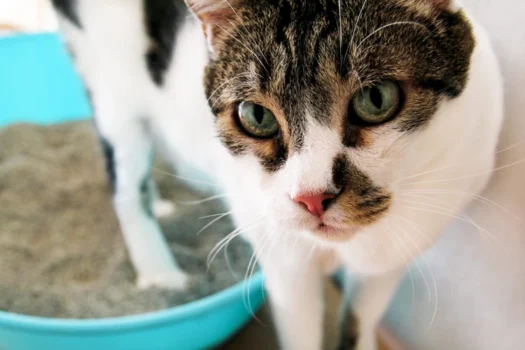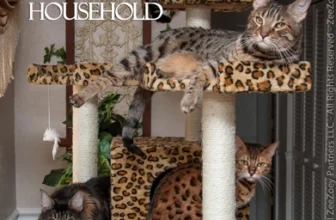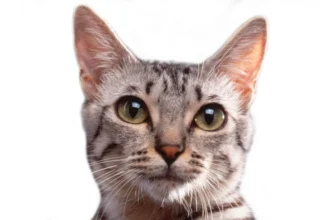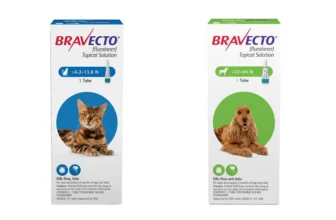As a California Spangled cat owner, have you ever wondered why your feline companion is experiencing pain while urinating or experiencing frequent accidents outside of their litter box? While it can be distressing to witness, these symptoms could be an indication of a urinary tract infection (UTI), a common ailment in cats. UTIs can be particularly dangerous and painful for your furry friend, so it’s important to know the signs, causes, and treatment options available in the event that your California Spangled cat develops this condition. Let’s explore everything you need to know about UTIs in California Spangled cats.
What are Urinary Tract Infections?
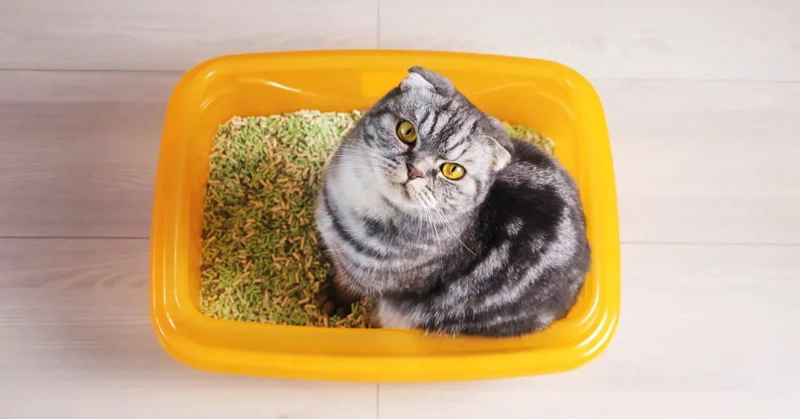
Urinary tract infections (UTIs) are a common issue that can affect California Spangled Cats, just like many other cat breeds. These types of infections result from the presence of harmful bacteria in the urinary tract, which includes the kidneys, ureters, bladder, and urethra. UTIs can cause a lot of discomfort and pain for cats, and can be potentially dangerous if left untreated. In this section, we will dive into the symptoms and causes of UTIs in California Spangled Cats, helping you to identify whether or not your furry friend may be affected. We will also discuss the diagnosis process and treatment options available for this condition. If you’re interested in learning about other health issues that can affect California Spangled Cats, you can also check out our articles on hairballs, dental health, and kidney disease.
Symptoms of UTIs in California Spangled Cats
Urinary tract infections (UTIs) can cause serious health problems in California Spangled Cats if not diagnosed and treated early. Symptoms can vary but often include discomfort and pain. It’s important for cat owners to be aware of the signs of UTIs so that prompt treatment can be provided. Below are some possible symptoms that can indicate a UTI in a California Spangled Cat.
| SYMPTOM | DESCRIPTION |
|---|---|
| Urinating outside the litter box | A cat with a UTI may associate the litter box with painful urination and start peeing elsewhere. |
| Frequent urination | A cat with a UTI may have to go more often than usual, and may only produce small amounts of urine at each visit to the litter box. |
| Painful urination | A cat with a UTI may vocalize during urination or show signs of discomfort such as crouching for an extended period, licking genitals excessively, or meowing while in the litter box. |
| Blood in urine | UTIs can cause blood to appear in the urine. If you notice discoloration or blood stains in the litter box or on the floor, a UTI may be the cause. |
| Lethargy | A cat with a UTI may seem uninterested in food, play, or other activities they normally enjoy. |
| Appetite loss | A cat with a UTI may have a decreased appetite and show little interest in eating or drinking. |
These symptoms may also be indications of other medical conditions in California Spangled Cats, so it is important to consult with a veterinarian for proper diagnosis and treatment.
In addition to recognizing the signs of UTIs, it is also important to be proactive about preventing them. Regular veterinary checkups and keeping your cat at a healthy weight can reduce the chances of UTIs. Stress can also be a contributing factor, so keeping your California Spangled Cat happy and comfortable can reduce the likelihood of them developing a UTI. More information on these topics can be found in our articles on spangled cat vet checkups, obesity treatment, Cali Cat stress, and Cali Cat allergies.
Causes of UTIs in California Spangled Cats
Urinary tract infections in California Spangled Cats can have several causes. Location of the bacteria in the urinary tract can differentiate the type of UTI. Here are some of the possible causes of UTIs in California Spangled Cats:
- Bacteria: Bacteria like Escherichia coli or Staphylococcus can cause UTIs in California Spangled Cats.
- Bladder Issues: If your pet’s bladder is not able to empty properly, it can cause a urinary tract infection.
- Diabetes: Cats with diabetes can be more susceptible to UTIs because their urine contains more glucose.
- Weak Immune System: A weak immune system can predispose your California Spangled Cat to develop UTIs.
- Stones: Crystals or stones in the urine can cause irritation and inflammation in the urinary tract. This can lead to UTIs.
- Genetic Factors: Certain breeds might be more prone to develop UTIs. However, there is no evidence that California Spangled Cats are more susceptible to UTIs than other breeds.
It is crucial to identify the underlying cause of your pet’s UTI to prevent future infections. If you suspect your California Spangled Cat has a urinary tract infection, take them to the vet for proper diagnosis and treatment. It is important to avoid self-diagnosing and treating your pet, as some treatments may do more harm than good.
Diagnosis

When your California Spangled Cat is exhibiting unusual behavior or discomfort, the diagnosis is crucial for prompt and effective treatment. Understanding the signs and causes of a urinary tract infection (UTI) in California Spangled Cats is important, but it is not enough to determine the exact condition. That’s why it’s necessary to seek professional veterinary assistance to diagnose and treat your furry friend’s UTI properly. Let’s take a closer look into the diagnostic process, including visiting the vet, tests, and procedures to determine the best course of action for your cat’s recovery. If you suspect your pet is experiencing skin irritation, check out our article to learn more about California Spangled Cat skin conditions.
Visiting the Vet
Visiting the vet should be your first course of action if you suspect your California Spangled cat is suffering from a UTI. A veterinarian will conduct a physical examination of the cat, which may include external genital examination, palpation of the bladder, and collecting a urine sample for analysis. The vet may also inquire about your cat’s diet and lifestyle, and whether it has had previous episodes of UTIs.
During your visit, it is important to share with the vet any information that may help with the diagnosis and treatment of the UTI. This may include any recent changes in your cat’s diet or environment, medications your cat is currently taking, or any symptoms you have observed. The vet may also ask you questions about the color, odor, and consistency of your cat’s urine.
To minimize any discomfort or stress, try to keep your cat calm throughout the visit. You can comfort your cat by talking to them softly, petting them or bringing their favorite toys and treats. A calm and relaxed cat is more likely to cooperate with the vet and go through the examination without much resistance.
The vet may prescribe medications to help relieve the UTI symptoms and prevent further complications. They may also recommend changes to your cat’s diet or lifestyle to prevent UTIs from recurring. It is important to follow the vet’s instructions when administering medication and to maintain regular checkups to ensure that your cat remains healthy.
To summarize, visiting the vet is crucial for diagnosing and treating UTIs in your California Spangled cat. Be sure to provide the veterinarian with all the necessary information, keep your cat calm and relaxed during the examination, and follow the vet’s advice to ensure your cat recovers fully and maintains good health.
| Tips for visiting the vet |
|---|
| 1. Provide the vet with all relevant information |
| 2. Keep your cat calm and relaxed during the examination |
| 3. Follow the vet’s instructions for medication and follow-ups |
| 4. Regular checkups can help prevent UTIs from recurring |
Tests and Procedures
When it comes to diagnosing a urinary tract infection (UTI) in California Spangled Cats, there are multiple tests and procedures available. These methods are essential to understand the severity and possible causes of the UTI. Here are some of the most common tests and procedures:
| Test/Procedure | Description |
|---|---|
| Urinalysis | A urinalysis is a common test used to diagnose a UTI in cats. It involves analyzing a urine sample for the presence of bacteria, white blood cells, and red blood cells. |
| Bacterial Culture | A bacterial culture involves taking a sample of the cat’s urine and growing it in a lab to see if bacteria is present. It can also help identify the specific type of bacteria and the appropriate antibiotic to treat it. |
| X-rays | X-rays may be recommended in some cases to look for any abnormalities in the urinary tract, such as bladder stones or tumors. |
| Ultrasound | An ultrasound can also be used to examine the urinary tract for any abnormalities or blockages. |
| Cystoscopy | A cystoscopy may be recommended in rare cases, which involves inserting a small camera into the bladder to visualize any problems or obstructions. |
These tests and procedures are typically performed by a veterinarian to diagnose and treat UTIs in California Spangled cats. It’s important to recognize the symptoms of a UTI in your cat and seek veterinary care promptly. By acting quickly, you can ensure your cat gets the proper diagnosis and treatment they need to recover from a UTI.
Treatment
Treating Urinary Tract Infections (UTIs) in California Spangled Cats is important in ensuring your feline friend’s health and well-being. There are several treatment options available, including antibiotics and medication, as well as prevention tips and home remedies and treatments. It is crucial to work closely with a veterinarian to determine the best course of action for your cat based on the severity of the infection. Let’s explore the different treatment options available for UTIs in California Spangled Cats.
Antibiotics and Medication
When a California Spangled cat is diagnosed with urinary tract infection, antibiotics and medication are commonly used in treatment plans. Antibiotics help to target the infection-causing bacteria and eliminate it from the cat’s body.
There are several types of antibiotics that may be prescribed by a veterinarian, such as amoxicillin, trimethoprim-sulfamethoxazole, and ciprofloxacin. The choice of antibiotic will depend on the severity of the infection, the cat’s age, and other factors. It’s important to follow the dosage instructions carefully and complete the entire course of antibiotics, even if the cat seems to be feeling better.
In addition to antibiotics, medications such as non-steroidal anti-inflammatory drugs (NSAIDs) may also be prescribed to help relieve any pain or discomfort the cat may be experiencing. These medications should only be given under the guidance of a veterinarian.
When administering medication to your cat, be sure to follow the instructions carefully. Some medications may need to be given with food, while others should be given on an empty stomach. It’s important not to give your cat any over-the-counter medications or human medications without first consulting with your veterinarian.
Table: Common antibiotics used for treating urinary tract infections in California Spangled Cats.
| Antibiotic | Dosage |
|————|——–|
| Amoxicillin| 5-10 mg/lb, twice daily |
| Trimethoprim-sulfamethoxazole | 15 mg/lb, twice daily |
| Ciprofloxacin | 5-15 mg/lb, once daily |
Note: Do not administer any medication without consulting with a veterinarian first.
It’s important to continue monitoring your cat’s symptoms after completing the antibiotic and medication treatment. If the symptoms persist or worsen, be sure to contact your veterinarian as soon as possible.
Prevention Tips
Preventing urinary tract infections (UTIs) in California Spangled Cats is essential to avoid recurrence of the infection. There are several preventive measures cat owners can take to keep their furry friends healthy. Follow these tips to prevent UTIs in California Spangled Cats:
- Keep your cat hydrated: Make sure your cat has access to fresh, clean water at all times. Encourage your cat to drink water by placing several bowls around your house.
- Provide a nutritious diet: Feed your cat a balanced and healthy diet to prevent UTIs. Avoid feeding your cat cheap and low-quality food as it can cause dehydration and lead to UTIs.
- Keep the litter box clean: Regularly clean your cat’s litter box to prevent the buildup of bacteria. Use unscented and dust-free litter as it minimizes the risk of infection.
- Regular vet check-ups: Schedule regular visits to the veterinarian to check for any signs of infection. Routine check-ups ensure that any UTIs are detected early and treated promptly.
- Practice good hygiene: Maintain proper hygiene by washing your hands before and after you handle your cat. Use a damp cloth to clean your cat’s genital area and paws after they use the litter box to remove any bacteria from the fur.
By following these preventive measures, cat owners can help reduce the chances of their California Spangled Cats developing UTIs. Remember that prevention is always better than cure. Take good care of your cat, and they will remain healthy and happy.
Home Remedies and Treatments
When it comes to home remedies and treatments for urinary tract infections (UTIs) in California Spangled Cats, it’s important to note that they should never be a replacement for professional veterinary care. However, there are certain things you can do at home to help ease your cat’s discomfort and support their overall health.
1. Increase Water Intake: Encouraging your cat to drink more water is essential for flushing out any bacteria that may be causing the infection. Offering wet food or adding water to dry food can help increase their fluid intake.
2. Cranberry Supplements: Some research suggests that cranberry supplements can help prevent UTIs in cats. However, it’s important to consult with your vet before giving your cat any supplements.
3. Keep the Litter Box Clean: A clean litter box can help prevent the spread of infection and reduce the risk of reinfection. It’s recommended to scoop your cat’s litter box at least once a day and completely change the litter once a week.
4. Use Natural Antibacterials: Some natural antibacterials such as apple cider vinegar and garlic have been used to treat UTIs in cats. However, it’s important to only use these remedies under the guidance of a veterinarian.
5. Supportive Care: Providing your cat with supportive care such as comfy bedding, a quiet and stress-free environment, and gentle belly rubs can help ease their discomfort and promote healing.
Remember, home remedies and treatments should always be used in conjunction with proper veterinary care. If you suspect your California Spangled Cat has a UTI, schedule an appointment with your vet as soon as possible.
Conclusion
In conclusion, it is important for California Spangled cat owners to be aware of the signs and symptoms of urinary tract infections in their beloved pets. If left untreated, UTIs can lead to serious health complications and even death. It is crucial to seek veterinary care as soon as possible if you suspect your cat may have a UTI.
Preventative measures such as providing your cat with plenty of fresh water, feeding them a balanced diet, and keeping their litter box clean can help reduce the risk of UTIs. Additionally, regular check-ups with the vet can catch any potential health issues before they become serious problems.
If your cat does develop a UTI, treatment with antibiotics and medication can be highly effective. It is important to follow your veterinarian’s instructions and complete the full course of treatment, even if symptoms subside. Home remedies and treatments should only be used under the guidance of a licensed veterinarian.
Overall, caring for a California Spangled cat means being attentive to their health and well-being. With proper care and attention, your feline companion can lead a long and happy life free from urinary tract infections and other health issues.
Frequently Asked Questions
1. Can UTIs be prevented in California Spangled Cats?
Yes, there are steps you can take to prevent UTIs in your California Spangled cat, such as providing clean water, a healthy diet, and a clean litter box.
2. What are the most common signs of a UTI in a California Spangled Cat?
The most common signs of a UTI in a California Spangled cat include frequent urination, straining to urinate, blood in the urine, and urinating outside the litter box.
3. How are UTIs diagnosed in California Spangled Cats?
UTIs in California Spangled Cats are diagnosed through a combination of physical examination, urinalysis, and possibly other tests such as blood work or radiographs.
4. What causes UTIs in California Spangled Cats?
UTIs in California Spangled Cats can be caused by a variety of factors, including bacterial infections, urinary tract stones, and blockages. Some cats may also be prone to UTIs due to underlying health issues.
5. Is it necessary to take a California Spangled cat to the vet if they have a UTI?
Yes, it is important to take your California Spangled cat to the vet if they have a suspected UTI. UTIs can lead to serious health complications if left untreated.
6. What kind of antibiotics are typically prescribed for a California Spangled cat with a UTI?
The type of antibiotic prescribed for a California Spangled cat with a UTI will depend on the severity of the infection and the cat’s overall health. Common antibiotics used to treat UTIs in cats include amoxicillin, clavamox, and cephalexin.
7. Can home remedies be used to treat a UTI in a California Spangled cat?
While some home remedies may offer relief for a California Spangled cat with a UTI, it is important to consult with a veterinarian to ensure proper treatment and prevent complications.
8. Can UTIs in California Spangled cats recur?
Yes, UTIs in California Spangled cats can recur if the underlying cause is not addressed and preventative measures are not taken. It is important to monitor your cat for signs of UTIs and follow any recommended preventative steps.
9. What kind of diet is recommended for California Spangled cats with UTIs?
A diet that is high in moisture and low in carbohydrates is recommended for California Spangled cats with UTIs. This can help promote urinary tract health and reduce the likelihood of recurring infections.
10. How long does it typically take for a California Spangled cat to recover from a UTI?
The length of time it takes for a California Spangled cat to recover from a UTI will depend on the severity of the infection and the cat’s overall health. With proper treatment, most cats will begin to show improvement within a few days and fully recover within a few weeks.

